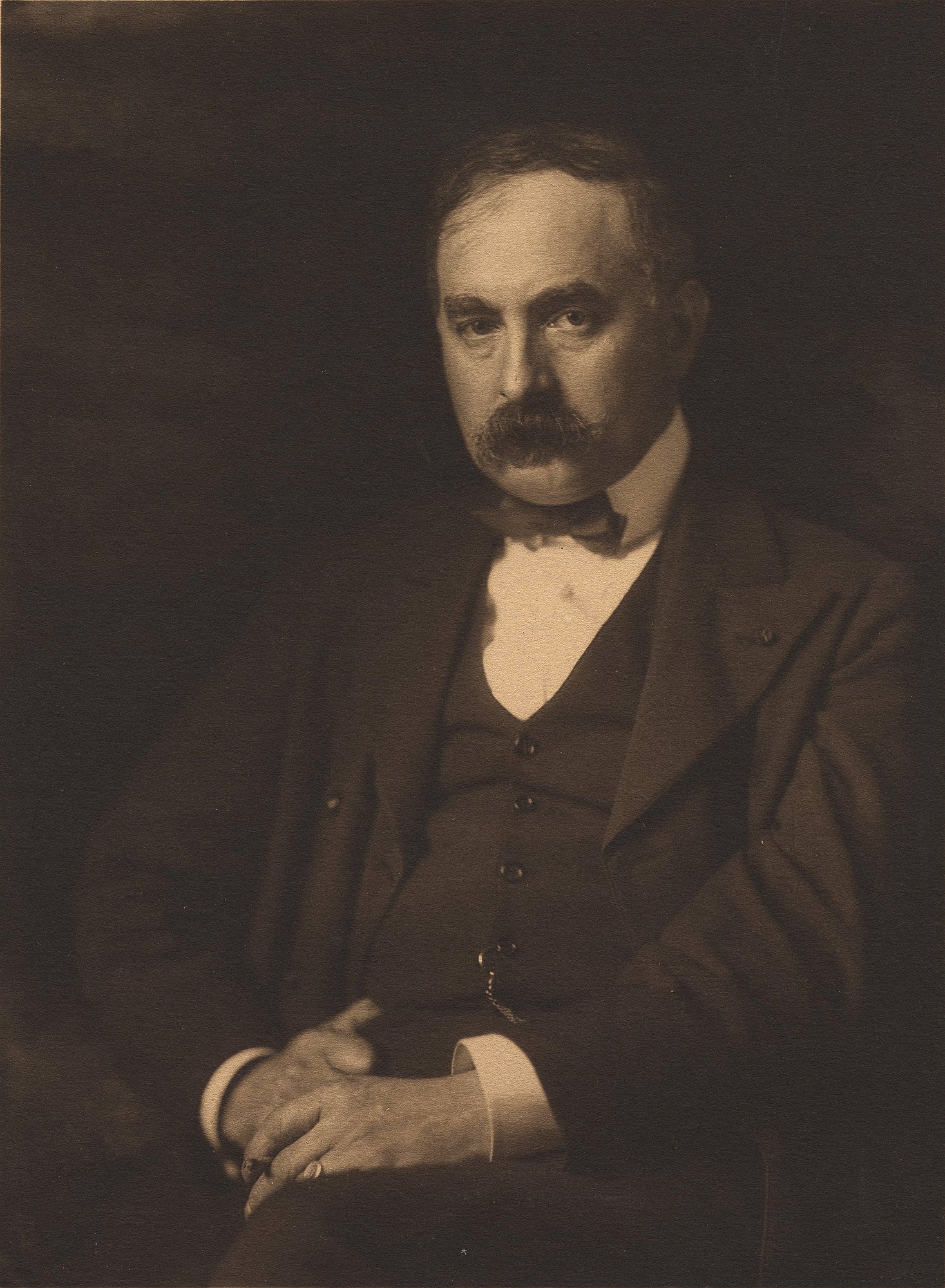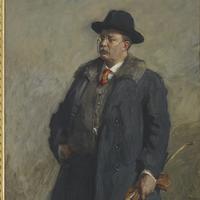More about Gari Melchers
Works by Gari Melchers

Contributor
The painter Julius Garibaldi Melchers, born in the U.S. one hundred and sixty years ago, went by the name "Gari," because his sculptor father, a student of Carpeaux, also had the name Julius Melchers.
The elder Melchers, Julius Theodore, had immigrated to Detroit from Prussia, which is now part of Germany. Melchers the Elder was glad to lend his sculptor's hand to building the PR story of the young Republic, even when it incorporated the stories of French settlers: he completed a major commission for the city of Detroit showing the likenesses of four Frenchmen, the first Europeans to build a settlement in Detroit. He also was a sought-after sculptor of "Cigar store Indians."
In his day, the younger Melchers was celebrated by top politicians and praised by journalists, garnering many awards and making lots of dough. A contemporary of van Gogh, Gari Melchers was about as far from van Gogh as it gets, in terms of the way we remember him. Even a local university website dedicated entirely to remembering Gari Melchers gives what sounds like a sheepish apology at the end of its biographical sketch: "while Gari Melchers’ canvases may never place him alongside his more famous contemporaries, his story is well worth telling." His skills were quite impressive, however, as in his work The Embroideress. His work is largely of a Naturalist or Realist bent, celebrating rural life in light-filled canvases that blend influences as varied as Post-Impressionism, Symbolism, and artists like Hans Holbein.
"I can't see why the world should care to hear about me, or my life," he told Cosmo, before it was a women's magazine. "When I was thirty, I had won all the medals I could win in Europe. From the beginning I have had my path made smooth for me."
Although a first-generation immigrant, Gari Melchers was never an outsider in the U.S., so he became a philanthropist, a chronicler of everyday life, and a messenger of European art across the Atlantic. Like Beuys and Candida Höfer, Gari Melchers had attended the Königliche Kunstakademie in Düsseldorf before settling in Egmond-aan-den-Hoef, a Dutch village that was once home to Descartes. He shared a studio with another expatriate, George Hitchcock, before meeting his wife, Corinne Lawton Mackall, the granddaughter of a Confederate general forgiven by the U.S. government. They married in 1903. Melchers traveled extensively in Europe, also working in Paris and Germany. The onset of World War I forced him to leave Weimar, where he was teaching, and return to the United States.
Once back across the Atlantic, the Melchers family divided their time between New York City and an estate in Fredericksburg, Virginia. Melchers' wife was also an artist, and although they had no children, she gave up her art so as not to become her husband's competitor. She also established The Artist's Fellowship, a still-operating nonprofit in New York that financially assists professional artists and their families in emergencies, served as co-founder of the Virginia Museum of Fine Arts, and was a board member of the Virginia Arts Commission.
A Fredericksburg journalist, Jayne Harding, tells us that Corinne, after she became a widow, was taking a nap in her private library when masked burglars broke into the house. Just before the police arrived, she tore into them: "I know who you are, even with that mask on! You wait until your mother hears about this. She will be horrified; she didn't raise you to do things like this!"
Sources
- Bellarmine Museum of Art. "Gari Melchers Brochure." Gari Melchers - Ephemera 10, 2015, https://digitalcommons.fairf i eld.edu/melchers-ephemera/10.
- Cosmopolitan, Volume 55. New York: Schlicht & Field, 1913.
- Federal Writers' Project. The WPA Guide to Michigan: The Great Lakes State. San Antonio, TX: Trinity University Press, 2013.
- Harding, Jayne. "A Renaissance Woman." Fredericksburg.com, Feb. 28, 2004, https://www.fredericksburg.com/town_and_countylocal_history/a-renaissan….
- Mirabent, Isabel Coll. Charles Deering and Ramón Casas / Charles Deering Y Ramón Casas: A Friendship in Art / Una Amistad en El Arte. Chicago: Northwestern University Press, 2012.
- Weisberg, Gabriel P. Beyond impressionism: the naturalist impulse. New York: Abrams, 1992.
- "Who was Gari Melchers?" University of Mary Washington. https://www.garimelchers.org/gari-melchers/.
Featured Content
Here is what Wikipedia says about Gari Melchers
Julius Garibaldi (Gari) Melchers (August 11, 1860 – November 30, 1932) was an American artist. He was one of the leading American proponents of naturalism.
He won a 1932 Gold medal from the American Academy of Arts and Letters.
Check out the full Wikipedia article about Gari Melchers











